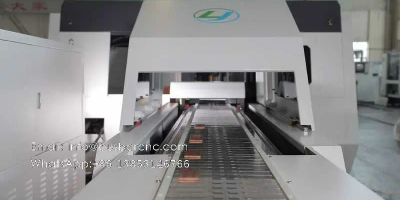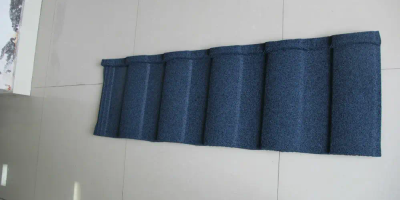introduction
The large axial flow booster fan is one of the important auxiliary equipment for the desulfurization flue gas system of the thermal power plant. Its operating status is crucial to the safe and economical operation of the thermal power plant. stop. The blades of the booster fan and the induced draft fan bear the centrifugal force and the erosion of solid particles in the high-temperature flue gas, and the working environment is relatively harsh. If the performance of the fan itself does not meet the design requirements, there is a problem with the processing quality of the blades, or the fan runs in the stall area, the blades are prone to breakage.
The flue air system of a 670t/h boiler unit is equipped with two centrifugal induced draft fans, and the desulfurization system is equipped with a statically adjustable axial flow booster fan. After the ultra-clean emission transformation, the blades of the booster fan frequently break.
Based on the experimental data, this paper analyzes the operation status of the turbocharger fan, the resistance of the flue gas system, and the cause of the blade fracture, and gives the transformation plan and selection parameters to solve the problem of fan blade fracture.
1 Equipment overview and accident process
1.1 Equipment overview
The boiler model is sG-670/13.7-M3001. The steam pressure of the boiler under rated working conditions is 13.7MPa, and the maximum continuous evaporation of the boiler is not less than 670t/h.
The booster fan of the desulfurization system is a statically adjustable axial flow fan of model RTF28-15-1 (improved from a dynamic adjustable axial flow fan), and the design speed of the fan is 990r/min.
1.2 Accident process
Before the ultra-low emission transformation of the unit, the booster fan operated stably, and there was no accident of blade breakage. After the ultra-low emission transformation, the supercharger fan blades began to break, and there was no obvious abnormality in the vibration data of the dial before each break. During the normal operation of the fan, the vibration suddenly increased, and the vibration speed exceeded 7mm/s. The fan was stopped immediately for inspection, and the blade was found to be broken. It is preliminarily judged that the blade has broken when the vibration increases, and through inspection, it is speculated that the fracture first occurred on one blade, and then the other blades were damaged by sweeping. The position of about 200mm of the disc is shown in Figure 1.
Figure 1 Schematic diagram of blade fracture site
2 Matching Analysis of Fan and Pipe Network System
According to the blade fracture phenomenon and relevant experience above, the following conclusions can be preliminarily drawn: after the ultra-low emission transformation, the resistance of the flue gas pipe network system and the desulfurization system increase, the output of the booster fan increases, and the matching between the fan and the flue gas pipe network system occurs. Variety.
In order to analyze the aerodynamic performance of the fan and its matching with the pipe network system where it is located, a field thermal test was carried out on the booster fan. The test was carried out under three working conditions with boiler evaporation of 405t/h, 496t/h, and 593t/h, and the coal feed was 54.8t/h (3 mills), 66.8t/h (3 mills), 80.3t/h (4 mills), the boiler is in good condition, the maximum opening of the induced draft fan is about 35%, and the maximum opening of the booster fan is 100%. The main data of the test are shown in Table 1, and the position of the actual operating point on the performance curve is shown in Figure 2.
Exploration on the Causes and Solutions of Blade Fracture of Axial-flow Turbocharger Fan in Thermal Power Plant
Exploration on the Causes and Solutions of Blade Fracture of Axial-flow Turbocharger Fan in Thermal Power Plant
From the above test data and the position distribution of the actual operating point on the performance curve, it can be seen that the operating point of the 400t/h operating condition is already in the stall area, the operating point of the 500t/h operating condition is located on the stall line, and the operating point of the 600t/h operating condition The point is closer to the stall line. In order to facilitate the quantitative analysis of the safety of fan operation, according to the test data, the stall margin, air volume margin and pressure margin from the stall line under the three test conditions are calculated. The results show that:
(1) The stall margins of the three operating points are all less than the requirements of at least 1.3 specified in the relevant codes.
(2) The air volume and air pressure stall margins are both less than 1.1, which is a relatively small value.
It can be seen from this that the stall margin of the existing booster fan does not meet the requirements of the relevant specifications, and the low-load operating point is already located in the fan stall area.
The air volume and pressure stall margins of the three test conditions are low. When the air volume or pressure of the system fluctuates suddenly, the opening of the fan cannot be adjusted in time, and it enters the stall area to operate.
To sum up, the matching between the existing booster fan and the pipe network system where it is located is poor, and the fan can easily enter the stall area to operate, so that the fan blades are frequently subjected to turbulent alternating stress, and then the blades break.
3 Blade material and flow field analysis of inlet and outlet flue
3.1 Material analysis of booster fan blades
In order to check whether there are problems in the material and strength of the blade itself, the broken blade is sent for inspection.
3.1.1 Visual inspection
The blade is connected to the flange. The blade is brown, with a width of about 340mm, a height of about 150mm, a maximum thickness of about 20mm, and a minimum thickness of about 8mm. The blade is deformed. The bottom of the flange is black, and there are no obvious traces of oxidation and corrosion.
3.1.2 Chemical composition analysis
The blade material is 0390. According to the “Chemical Analysis Methods of Iron and Steel and Alloys”, the chemical composition of the sample submitted for inspection was analyzed, and the results showed that the chemical composition of the sample met the requirements of 0390E in “Low Alloy High Strength Structural Steel” (GB/T1591-2008).
3.1.3 Metallographic examination
Sampling was carried out to analyze the metallographic structure of the leaves. The metallographic structure of the leaves was ferrite + pearlite, and the structure was normal. There is a weld at 15-25mm away from the fracture, and the metallographic structure of the weld is ferrite + pearlite + bainite, and the structure is normal. There is a metal coating on the surface of the blade, and the maximum thickness of the coating is about 1mm.
3.2 Flow field analysis of fan inlet and outlet flue
In order to explore the flow field of the inlet flue and whether the inlet airflow has a significant negative impact on the booster fan, the three-dimensional geometric modeling of the inlet flue of the booster fan is carried out, and the numerical calculation of the built model is carried out. In order to ensure the grid quality, Meshing adopts hexahedral grid. The calculation considers that the fluid is incompressible, and the discrete equations in the rotating coordinate system are solved by the explicit coupling method. The turbulence model adopts the standard k-8 model, and the standard wall function is used at the same time. The boundary conditions are given speed at the inlet and static pressure at the outlet, and the calculated working condition is the design working condition. The schematic diagram of the geometric model is shown in Figure 3.
Figure 3 3D model of the inlet flue
Numerical simulation calculations were carried out on the three-dimensional model of the built flue, and the streamline diagram of the overall flow field is shown in Figure 4. From the numerical calculation results, it can be seen that the flue gas comes out of the induced draft fan, meets the T-shaped hedging section, and then enters the booster fan through two continuous elbows. There are obvious local air turbulence areas in the T-shaped hedging section and its downstream. Then, after rectification of the descending straight pipe section at the inlet of the booster fan, the airflow entering the booster fan is relatively evenly distributed.
Figure 4 Schematic diagram of the streamlines of the inlet flue flow field
4 Fan renovation plan and renovation effect
4.1 Introduction of Retrofit Scheme
The matching between the fan and the system, the material performance of the blade itself, the flow field of the flue, etc. have been inspected, calculated and analyzed above. It is believed that the main reason for the fan blade fracture is: the performance of the fan does not match the smoke and air system where the fan is located. When operating in a stall or near-stall state, the blades are vulnerable to the impact of unstable airflow, and there is a strong airflow excitation force. At the same time, there are certain quality problems in the processing of fan blades, which lead to fatigue fracture of the fan under the action of alternating stress for a long time.
Since the operating parameters of the existing flue gas system are determined by factors such as equipment and boiler operating conditions, it is difficult to optimize or transform the system. Therefore, in order to solve the problem of the mismatch between the fan and the flue gas system, the main technical route It is to carry out the transformation of the booster fan body, and select the appropriate fan according to the parameters of the existing flue gas system. At the same time, the flue is optimized to reduce the resistance of the flue gas system, further improve the inlet airflow of the booster fan, and improve the economy and reliability of the fan operation.
The main performance parameters of the new booster fan are determined as follows:
4.1.1 Determination of air volume parameters
During this test, due to the boiler’s own problems, the boiler did not reach the maximum BMCR output condition. Therefore, when designing the fan air volume parameters, it is necessary to convert the measured booster fan air volume to the boiler BMCR operating condition based on the maximum operating load of the test. It is concluded that the air volume of the booster fan in BMCR working condition during the test is 272.8m3/s.
The fan modification has no effect on the flue gas temperature. Considering the changes in the boiler operation in the future, it is advisable to select 10% of the air volume margin on the basis of the BMCR measured air volume according to the selection experience, and take 300.0m3/s after calculation and rounding.
4.1.2 Determination of Wind Pressure Parameters
In the same way, the wind pressure of the booster fan in BMCR working condition during the test period is converted to 2072Pa. Considering that there are still two spray layers in the desulfurization system that have not been opened during the test, an additional 800 Pa is added on the basis of the converted total pressure: after flue optimization, the flue resistance at the section from the outlet of the induced draft fan to the inlet of the booster fan can be reduced by about 120 Pa, and the BMCR can be obtained The working condition total pressure is 2752Pa.
Considering the summer working conditions, poor coal quality, increased air leakage, air preheater clogging, etc., a wind pressure margin of 15% was selected on the basis of the measured flue gas system resistance, and the TB working condition of the booster fan after the transformation was calculated. The design pressure is rounded to 3100.0Pa.
4.1.3 Motor power parameter determination
After checking, the original motor meets the operation requirements and does not need to be modified.
4.1.4 Fan selection parameters
According to the measured parameters of the test and the design point parameters calculated above, the main operating parameters of the modified fan under various working conditions can be obtained as shown in Table 2.
Exploration on the Causes and Solutions of Blade Fracture of Axial-flow Turbocharger Fan in Thermal Power Plant
4.2 Transformation effect
After the transformation based on the above analysis results and the proposed transformation plan, the booster fan has been operating safely and stably for more than a year, and no cracking or breaking of the blades has been found. Under full load conditions, the vibration velocity of the fan is less than 2.5mm/s, and the transformation has achieved good results.
5 Conclusion
This paper introduces the blade fracture of the booster fan, and explores the reasons for blade fracture from the aspects of fracture phenomenon summary, blade material performance detection, fan aerodynamic performance analysis, and inlet flue numerical calculation.
Through the analysis, this paper believes that the main reason for the fracture of the fan blade is that the performance of the fan does not match the flue gas system where it is located. The fan operates in a stall or near-stall state for a long time, and the blades are easily impacted by the unstable airflow, and there is a strong airflow excitation force. At the same time, there are certain quality problems in the processing of fan blades, and the fan is subjected to alternating stress for a long time, resulting in fatigue fracture.
Finally, according to the measured data of the flue gas system, the new selection design parameters of the booster fan were given and modified. Since then, the fan has been running safely and stably for more than a year without blade breakage, and the vibration velocity is less than 2.5mm/s. The modification has achieved good effect. This paper provides a typical case for solving the problem of fan blade fracture, and has a good reference value for solving related problems.




